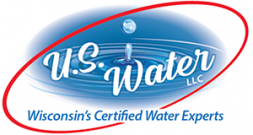
Legionella Diseases: An Overview Guide for Facility Managers
Legionella is a genus of pathogenic gram-negative bacteria, and one of its species, L. pneumophila, can lead to two distinct illnesses, particularly to individuals with compromised immune systems.:
1. Legionnaires’ Disease
-
-
-
- Symptoms: Headache, muscle aches, high fever, cough (sometimes with mucus and blood), shortness of breath, chest pain, gastrointestinal issues (nausea, vomiting, diarrhea), confusion or mental changes.
-
-
-
-
-
- Severity: Legionnaires’ disease is a severe form of pneumonia, causing lung inflammation and potential infections in wounds and other body parts, including the heart.
-
-
-
-
-
- Treatment: Prompt antibiotic treatment usually cures the disease, but some individuals may experience lingering issues post-treatment.
-
-
2. Pontiac Fever
-
-
-
- Symptoms: Resembling the flu, Pontiac fever includes milder symptoms and typically resolves on its own within two to five days. It doesn’t infect the lungs.
-
-
-
-
-
- Severity: While milder than Legionnaires’ disease, Pontiac fever can cause flu-like discomfort.
-
-
Legionella bacteria thrive in warm freshwater environments, and the primary mode of transmission is through inhaling microscopic water droplets containing the bacteria.
Where is it commonly found?
Legionella bacteria are typically found in aquatic environments, including:
-
-
-
- Hot water tanks and heaters
- Cooling towers
- Hot tubs and whirlpools
- Decorative fountains
- Plumbing systems in large buildings
- Air conditioning systems
-
-
Why Is It a Greater Concern in Healthcare Facilities?
Legionella poses a significant threat in healthcare settings due to several factors:
-
-
-
- Vulnerable Patients: Patients in healthcare facilities, especially those with underlying health conditions or undergoing invasive procedures, are at increased risk of Legionella infections. Individuals at higher risk include older adults, smokers, and those undergoing invasive procedures or with weakened immune systems.
- Aerosolization: Legionella can be aerosolized in water systems, leading to inhalation and subsequent infection, particularly in settings like hospitals and nursing homes.
- Potential Outbreaks: Outbreaks of Legionnaires’ disease in healthcare facilities can lead to severe illness and even fatalities, necessitating proactive prevention measures.
-
-
Facility Risk
In the United States, the rate of reported cases of Legionnaires’ disease has grown by nearly nine times since 2000.The risk associated with Legionella outbreaks in facilities is a significant concern both in terms of public health and potential legal implications.
Health Risk
-
-
-
- Severity of Legionnaires’ Disease: Legionnaires’ disease can lead to severe pneumonia, potentially resulting in hospitalization and, in some cases, fatalities. The severity depends on factors such as the individual’s health, age, and immune system strength.
-
-
-
-
-
- Susceptibility of Vulnerable Populations: Older adults, smokers, and individuals with weakened immune systems are more susceptible to severe outcomes, increasing the health risk for these populations.
-
-
-
-
-
- Potential for Outbreaks: Inadequate control of Legionella in water systems can lead to outbreaks within facilities, impacting multiple individuals simultaneously.
-
-
Legal Risk
-
-
-
- Regulatory Compliance: Facilities are subject to various regulations and guidelines that mandate preventive measures for Legionella control. Non-compliance may lead to legal consequences and regulatory penalties.
-
-
-
-
-
- Liability Issues: If individuals contract Legionnaires’ disease within a facility due to negligence in Legionella prevention, the facility may face legal liability and potential lawsuits.
-
-
-
-
-
- Financial Implications: Legal battles, fines, and reputational damage can have financial implications for a facility found responsible for Legionella-related issues.
-
-
Preventing Legionella Exposure
-
-
-
- Routine Testing: Regular testing for Legionella in water systems helps identify potential risks and allows for timely preventive action.
-
-
-
-
-
- Water Management Plans: Implementing comprehensive water management plans to control Legionella growth and transmission is crucial for regulatory compliance and risk reduction.
-
-
- Regular maintenance of water systems to minimize bacterial growth.
- Ensuring proper ventilation and water treatment in large facilities.
- Monitoring and controlling water temperatures.
-
-
- Water Management Plans: Implementing comprehensive water management plans to control Legionella growth and transmission is crucial for regulatory compliance and risk reduction.
-
-
-
-
-
- Staff Training: Educating staff on Legionella prevention and maintenance practices is essential for effective risk management.
-
-

The number of cases reported to CDC has been on the rise since 2000. Health departments reported nearly 10,000 cases of Legionnaires’ disease in the United States in 2018.
However, because Legionnaires’ disease is likely underdiagnosed, this number may underestimate the true incidence.
Click chart to enlarge.

